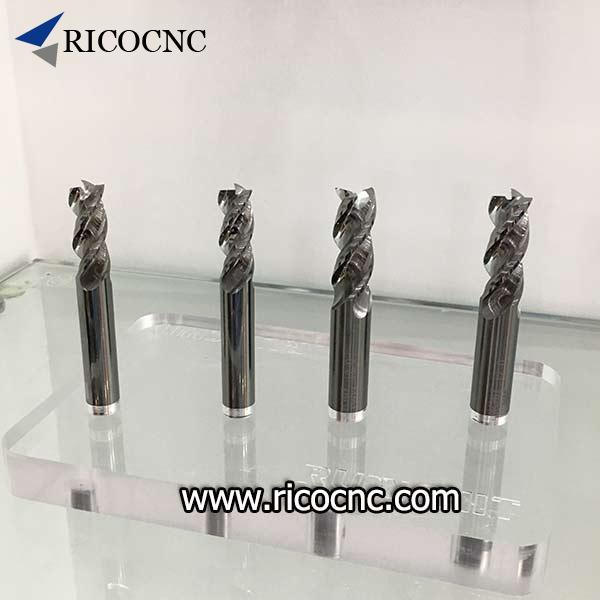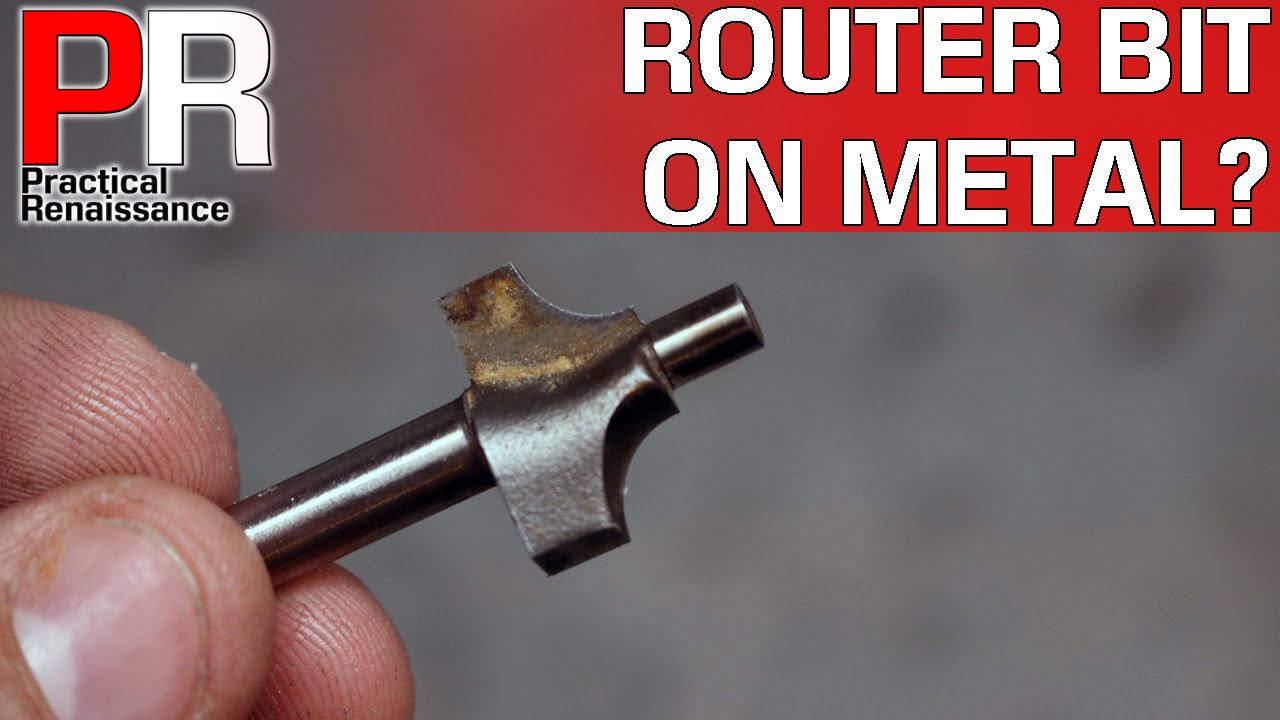Are you curious about whether router bits can be used on aluminum? Well, you’ve come to the right place! Aluminum is a versatile material that is commonly used in various applications, from crafting to construction. And if you’re wondering if your trusty router can handle aluminum, we’ve got the answers for you.
When it comes to working with aluminum, using the right tools is crucial. You might be familiar with router bits being used on wood, but can they also tackle aluminum? In this article, we’ll explore the compatibility of router bits with aluminum and provide some useful tips to ensure optimal results.
So, if you’re ready to dive into the world of router bits and aluminum, let’s get started! We’ll discuss the potential challenges, the types of router bits suitable for aluminum, and some essential precautions to keep in mind. Get ready to discover the possibilities of using router bits on aluminum!

Can Router Bits Be Used on Aluminum?
In the world of woodworking, router bits are commonly used for shaping and cutting various materials. But can router bits be used on aluminum? This question often arises when woodworkers want to try their hand at working with metal. In this article, we will explore whether router bits can be used on aluminum, the benefits and challenges of using router bits on aluminum, and tips for successful aluminum routing.
The Compatibility of Router Bits and Aluminum
When it comes to using router bits on aluminum, the answer is yes, it can be done. However, there are a few factors to consider. Firstly, it’s important to choose the right type of router bits. Carbide-tipped bits are generally the most suitable for working with aluminum due to their hardness and durability. High-speed steel (HSS) bits can also be used, but they may not offer the same level of performance as carbide bits. It’s worth noting that router bits designed for woodworking may not be suitable for cutting aluminum.
Another consideration is the speed at which the router spins. Aluminum requires higher spindle speeds compared to wood, as the material is denser and harder. It’s recommended to use a router with variable speed control to ensure optimal cutting performance. Additionally, using coolant or lubricant during the routing process can help dissipate heat and prolong the life of the router bit.
Lastly, safety precautions should always be followed when working with aluminum and router bits. Proper eye and ear protection should be worn, and a secure workholding method should be used to prevent accidents or kickbacks. Taking these precautions will ensure a safe and productive routing experience with aluminum.
The Benefits of Using Router Bits on Aluminum
Using router bits on aluminum opens up a world of possibilities for woodworking enthusiasts. Here are some of the benefits:
- Flexibility: Router bits offer versatility in cutting designs and shapes in aluminum. From simple edges to intricate patterns, a router bit allows for precise and detailed work.
- Cost-Effectiveness: Rather than investing in specialized metalworking tools, using router bits on aluminum allows woodworkers to utilize their existing equipment for multiple purposes, saving money in the long run.
- Creative Possibilities: Aluminum can be used in combination with wood to create unique and visually stunning pieces. By incorporating router bits into aluminum projects, woodworkers can add decorative elements and enhance the overall design.
Tips for Router Bit Use on Aluminum
To achieve optimal results when using router bits on aluminum, consider the following tips:
- Start Slow: Begin routing aluminum at a low speed and gradually increase the speed as you become more comfortable. This allows for better control and reduces the risk of overheating the material.
- Minimize Bit Engagement: Unlike wood, where deeper cuts are often desired, aluminum should be routed with shallow and multiple passes. This approach helps prevent excessive heat buildup and reduces the risk of chipping or breaking the router bit.
- Use Proper Chip Collection Methods: Aluminum chips can be sharp and pose a safety hazard. Ensure that a dust collection system or appropriate chip containment method is used to avoid injury and maintain a clean work environment.
- Regularly Inspect and Sharpen Router Bits: Over time, router bits can become dull from cutting aluminum. Regularly inspect the bits for signs of wear and sharpen them when necessary to maintain cutting performance.
Common Types of Router Bits for Aluminum
When choosing router bits for aluminum, there are several options available. The following are some common types of router bits used for aluminum:
- Straight Bits: These bits have a flat bottom and are suitable for cutting straight edges and grooves in aluminum.
- Flush Trim Bits: Flush trim bits can be used to trim excess aluminum, creating a smooth and even edge.
- Chamfer Bits: Chamfer bits are ideal for creating beveled edges on aluminum, adding a decorative touch to projects.
- V-Groove Bits: V-groove bits are used to create V-shaped cuts, which are often used for decorative purposes or for joining aluminum components.
Conclusion
Router bits can indeed be used on aluminum, but it’s essential to select the appropriate bits, consider the speed and cooling requirements, and follow safety precautions. The compatibility between router bits and aluminum opens up new opportunities for creative woodworking projects. With the right tools and techniques, the incorporation of aluminum into woodworking can result in stunning and unique pieces. So, if you’re up for the challenge, don’t hesitate to give router bits a try on aluminum!
Can router bits be used on aluminum?
When it comes to using router bits on aluminum, there are a few things to consider:
- 1. Router bits designed for wood may not be suitable for aluminum as they can get damaged easily.
- 2. Specialized router bits made specifically for aluminum are available and should be used for best results.
- 3. It’s important to use proper cutting techniques to avoid overheating and ensure clean cuts.
- 4. Lubricants or coolants can help reduce friction and prevent the aluminum from sticking to the bit.
- 5. Safety precautions such as wearing protective eyewear and gloves should always be taken when working with router bits on aluminum.
Frequently Asked Questions
Welcome to our FAQ page on using router bits on aluminum. Here, you’ll find answers to some common queries about this topic. Read on to learn more!
1. Are router bits suitable for cutting aluminum?
Yes, router bits can indeed be used for cutting aluminum. However, it’s important to choose the right type of router bit specifically designed for cutting non-ferrous metals like aluminum. These router bits are typically made from carbide or diamond and feature a special coating that helps with heat dissipation. Using a regular wood-cutting router bit on aluminum can result in poor performance and even damage the bit.
When cutting aluminum with router bits, it’s also crucial to use appropriate cutting speeds and feeds, as well as lubrication to prevent overheating. Additionally, wearing safety gear, such as goggles and gloves, is essential to protect yourself during the cutting process.
2. Can I use the same router bits for aluminum and wood?
No, it is not recommended to use the same router bits for both aluminum and wood. Wood-cutting router bits are typically designed with different cutting angles, flute designs, and coatings to best suit the properties of wood. Using them on aluminum may result in poor quality cuts, excessive heat buildup, and shorter tool life.
Investing in specific router bits designed for aluminum will ensure better performance, cleaner cuts, and prolonged tool life. These specialized bits have stronger cutting edges and are better equipped to handle the challenges of cutting non-ferrous metals like aluminum.
3. What types of router bits are best for cutting aluminum?
When cutting aluminum with a router, you’ll want to opt for router bits specifically designed for non-ferrous metals. The most common types of router bits recommended for aluminum cutting are straight-cutting bits, spiral-cutting bits, and compression bits.
Straight-cutting bits are a popular choice for general aluminum cutting tasks. Spiral-cutting bits are known for their ability to clear chips efficiently, making them suitable for deep cuts and high-speed operations. Compression bits, while more expensive, are ideal for achieving clean edges and reducing the risk of burrs, making them great for aluminum sheet cutting.
4. Can I use a router with aluminum sheet?
Yes, you can use a router with aluminum sheet. However, it’s important to take certain precautions. Ensure that the aluminum sheet is securely clamped down to prevent movement during the cutting process. It’s also crucial to use the appropriate cutting speeds, feeds, and lubrication to prevent heat build-up and ensure smoother cuts.
Moreover, always work with caution and wear proper safety gear, including goggles and gloves, when operating a router with aluminum sheets.
5. What are some general tips for cutting aluminum with a router?
To ensure successful aluminum cutting with a router, here are a few general tips:
– Use router bits specifically designed for aluminum to achieve cleaner cuts and longer tool life.
– Employ the appropriate cutting speeds and feeds recommended for aluminum cutting.
– Apply lubrication to reduce friction and heat buildup during the cutting process.
– Securely clamp down the aluminum material to prevent movement and ensure safety.
– Always wear appropriate safety gear, including goggles and gloves, to protect yourself.
By following these tips, you’ll enhance your cutting results and make the most of your router when working with aluminum.

Summary
Router bits can be used on aluminum, but it’s important to choose the right bit.
You need a carbide or diamond-coated bit and a slow speed to avoid overheating the metal.
